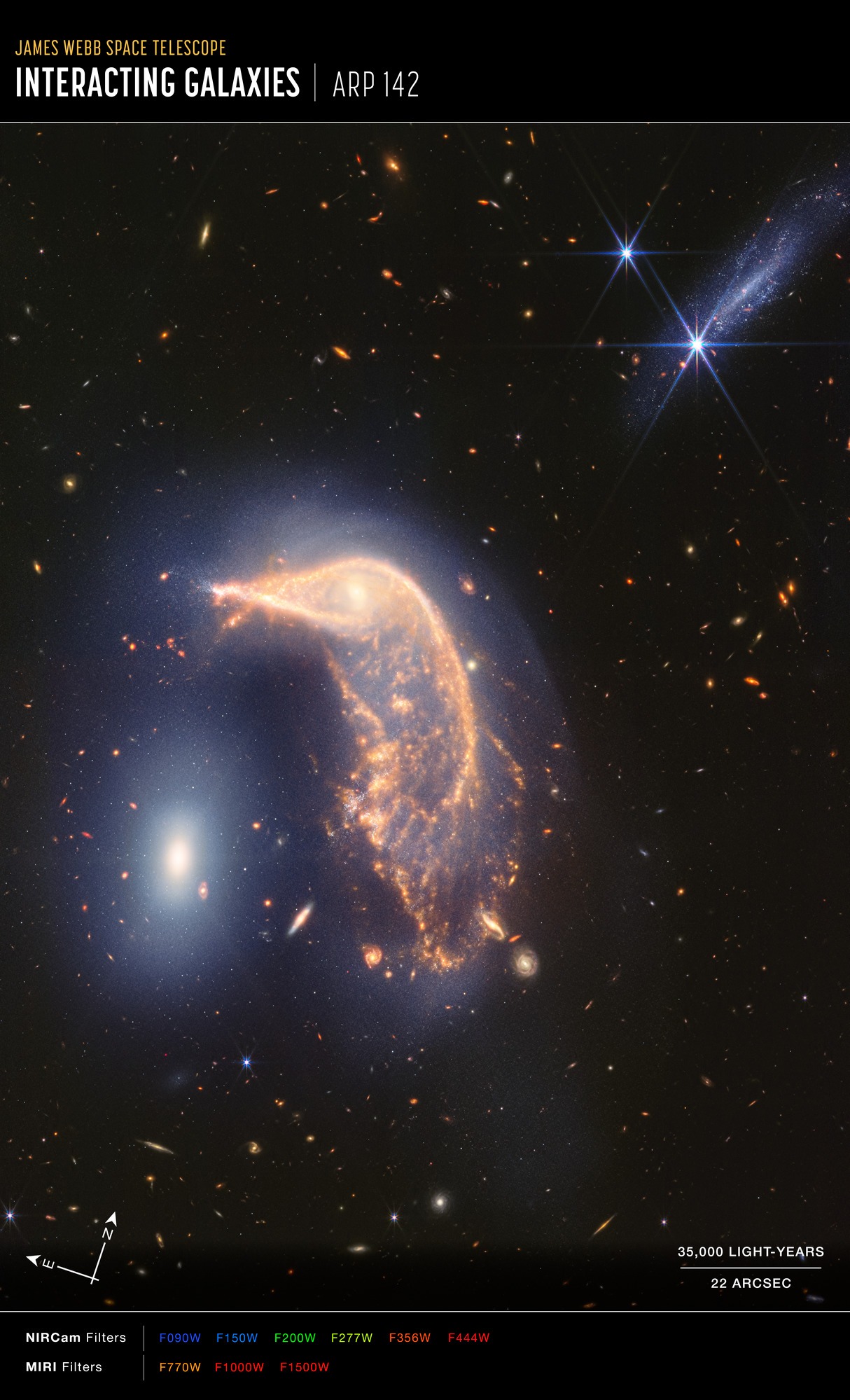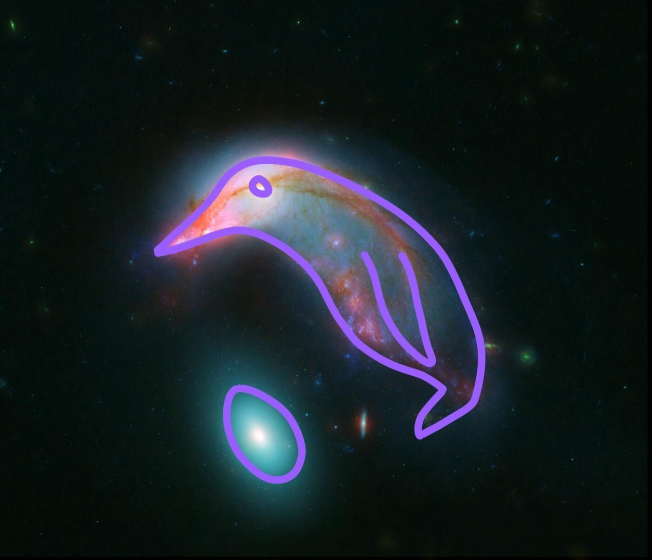July 12 marks exactly two years since the first images from the James Webb Space Telescope were released. During this time, JWST has discovered the most distant galaxies, solved some of the mysteries of the early Universe, explored the atmospheres of distant planets, and taken many spectacular images of the space.

“Since President Joe Biden and Vice President Kamala Harris unveiled the first image from James Webb two years ago, this telescope has continued to unlock the mysteries of the Universe. With stunning images from across the cosmos, the telescope’s capabilities are shedding new light on our understanding of the cosmic environment and inspiring future generations of scientists and explorers,” said NASA Administrator Bill Nelson.
On the occasion of the anniversary, scientists have published a new image obtained by the telescope, showing a pair of galaxies in a cosmic dance. The pair, known as Arp 142, was nicknamed the “Penguin and the Egg” because of its resemblance to a penguin’s head and body. The galaxies’ gravitational forces cause the spiral galaxy Penguin to warp into its current shape, creating areas of active star formation as dust and gas gather in tight pockets. The Egg is an elliptical galaxy full of old stars whose shape remains nearly unchanged.

The image combines data from the James Webb instruments in the near and mid-infrared, allowing us to see different processes in the galaxy. If you look at the mid-infrared image alone, some background galaxies, like PGC 1237172, almost disappear because this wavelength targets old stars, and the stars here are very young.
“In just two years, James Webb has changed our understanding of the Universe. The telescope is helping to unravel the mysteries of the early Universe and ushering in a new era of exploration of distant worlds, inspiring people around the world and raising exciting new questions to be answered. It’s never been easier to explore every facet of the Universe,” said Mark Clampin, Director of the Astrophysics Division at NASA Headquarters.
Earlier we reported how JWST found the source of the first light in dark space.
Based on materials from webbtelescope.org

